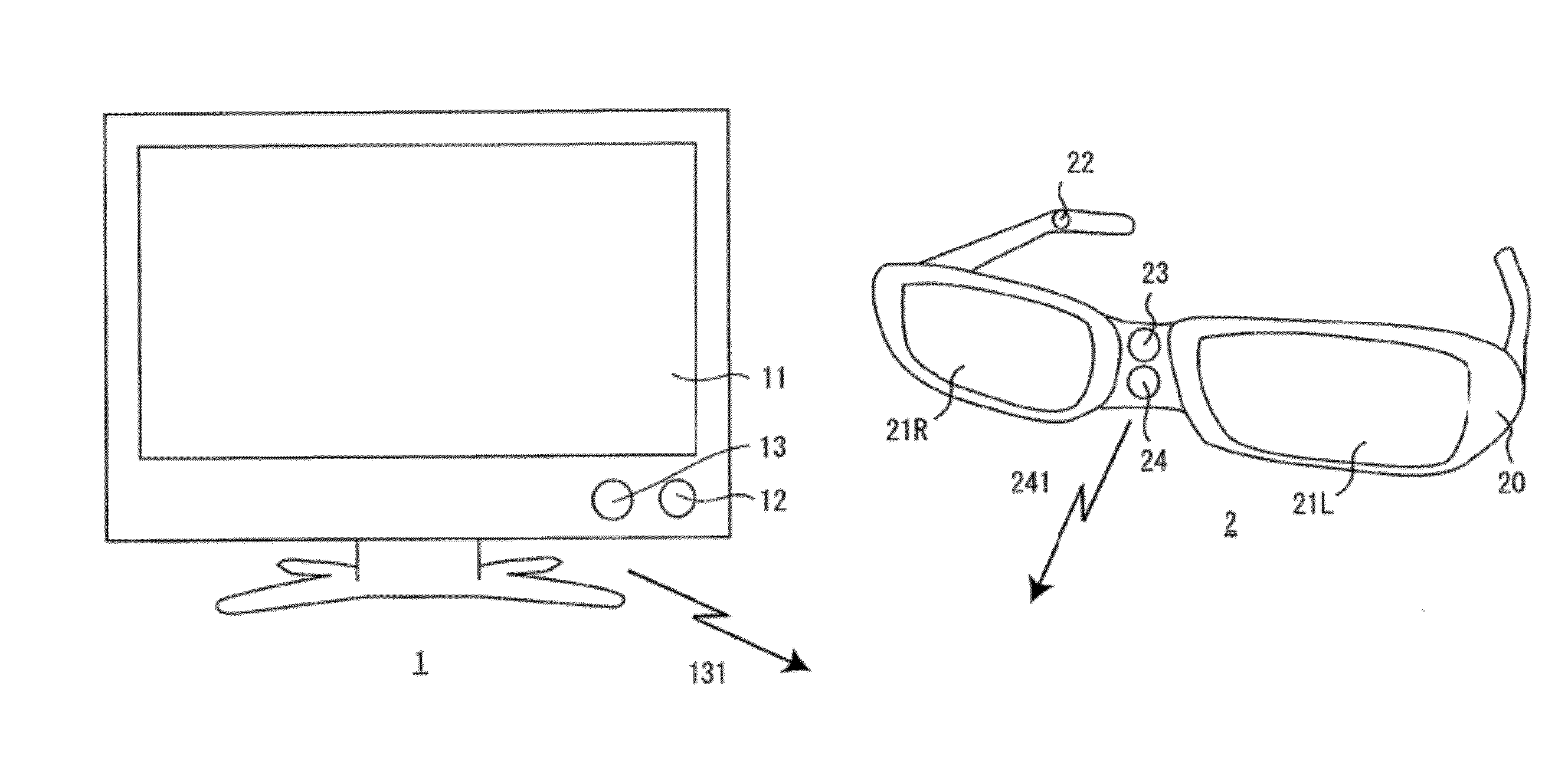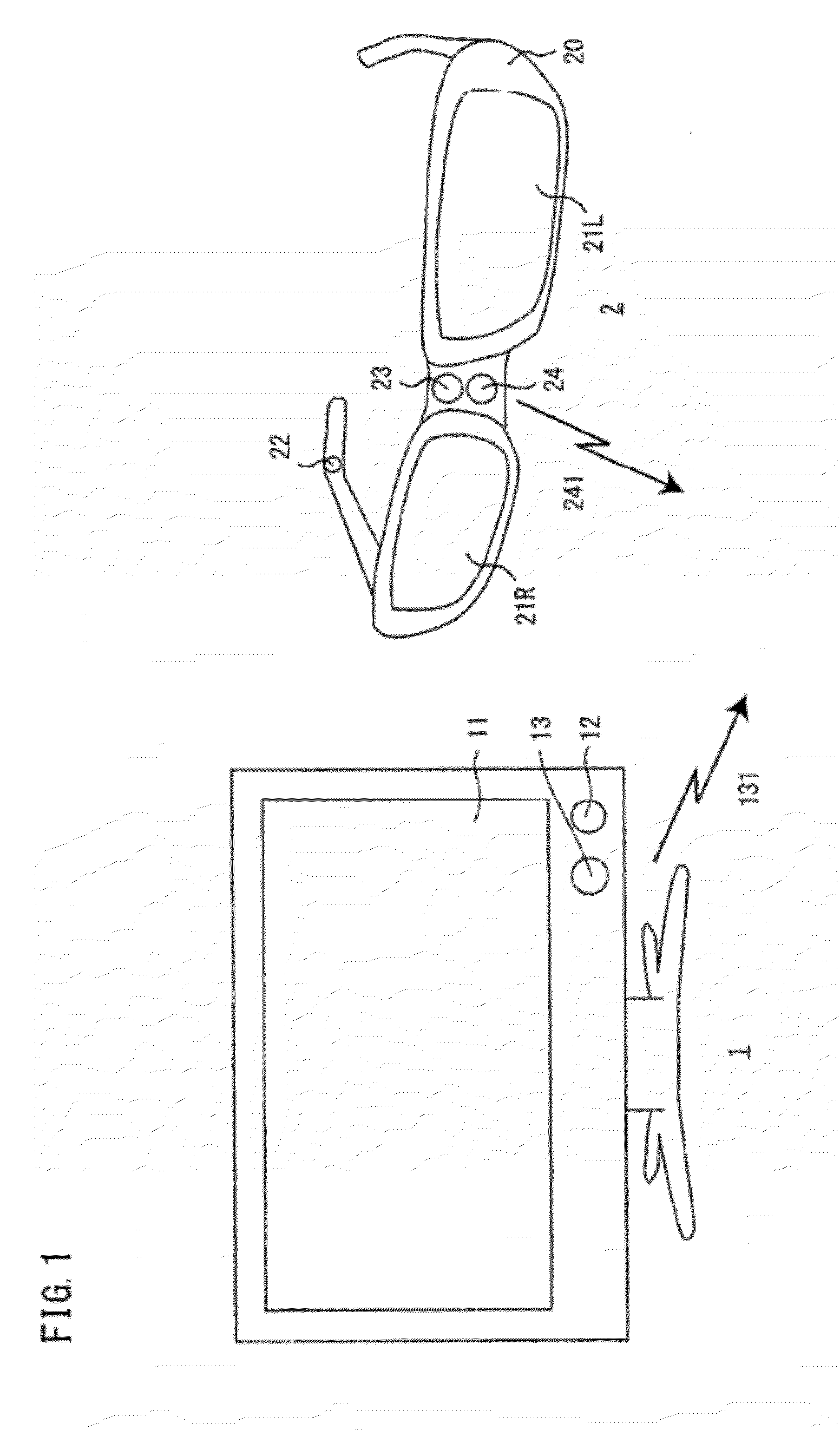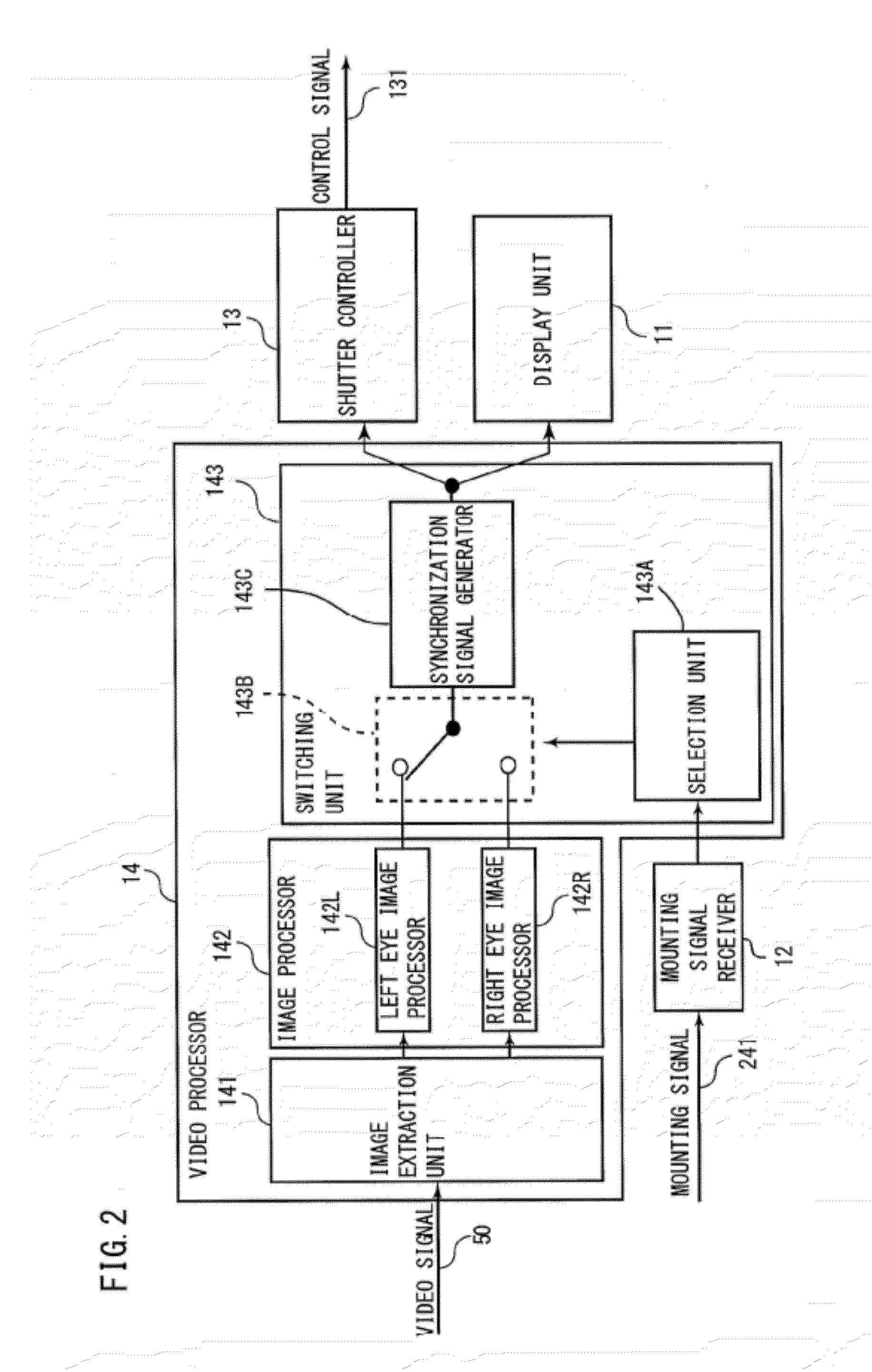Image display device, vision aid and stereo image display system using the same
- Summary
- Abstract
- Description
- Claims
- Application Information
AI Technical Summary
Benefits of technology
Problems solved by technology
Method used
Image
Examples
embodiments
[0036]Now, embodiments of the present invention will be described in more detail with reference to the drawings. The identical and corresponding portions in the drawings are labeled with the same numerals and their description will not be repeated.
First Embodiment
[0037]Configuration of Stereo Image Display System
[0038]First, referring to FIG. 1, the configuration of a stereo image display system will be described. The stereo image display system shown in FIG. 1 includes an image display device 1 and a vision aid 2.
[0039]In the present implementation, the image display device 1 is a liquid crystal display; however, any light-emitting display or non-light-emitting display may be used. Examples of light-emitting displays include, but are not limited to, a cathode-ray tube, a plasma display, an organic electroluminescent device, an inorganic electroluminescent device, and a field-emission display. Examples of non-light-emitting displays include, but are not limited to, a liquid crystal ...
first embodiment
Variations of First Embodiment
[0099]In the first embodiment, the mounting detector 22 implemented as a push switch that can be pressed in when it comes in contact with the head of the user has been described; however, the following variations are also possible. That is, the mounting detector 22 may be of any configuration that allows it to detect that it is in contact with, or close to, a portion of the user's body. For example, the mounting detector 22 may be implemented as a touch sensor, a pressure sensor, a slide switch, a human-sensitive sensor or the like.
[0100]Touch sensors include, for example, capacitive or resistive touch sensors. Alternatively, a photosensitive touch sensor may be used.
[0101]A slide switch may be employed, for example, in a goggle-type vision aid 2 that can be mounted on the head of the user by means of an elasticized band. That is, the band is stretched when the user wears the vision aid 2 on his head. As such, a slide switch may be provided on the band ...
second embodiment
Variation of Second Embodiment
[0119]The above description of the second embodiment has illustrated an implementation where the display mode is switched to the stereo image display mode if Yes at step S1105. However, in a variation thereof, instead of step S1105, it may be determined whether the number of vision aids 2 considered to be mounted on the head of a user is at least one and, if Yes, the process proceeds to step S1106 or, if No, the process proceeds to step S1112.
[0120]Alternatively, one of the vision aids 2 may be designated as a representative vision aid (hereinafter referred to as “parent”), and the display mode of the display unit 11 may be switched to the stereo image display mode if it is determined that the parent is mounted on the head of a user and may be switched to the planar image display mode if it is determined that the parent is not mounted on the head of a user.
[0121]Further, although the second embodiment has illustrated an implementation where a mounting s...
PUM
 Login to View More
Login to View More Abstract
Description
Claims
Application Information
 Login to View More
Login to View More - R&D
- Intellectual Property
- Life Sciences
- Materials
- Tech Scout
- Unparalleled Data Quality
- Higher Quality Content
- 60% Fewer Hallucinations
Browse by: Latest US Patents, China's latest patents, Technical Efficacy Thesaurus, Application Domain, Technology Topic, Popular Technical Reports.
© 2025 PatSnap. All rights reserved.Legal|Privacy policy|Modern Slavery Act Transparency Statement|Sitemap|About US| Contact US: help@patsnap.com



